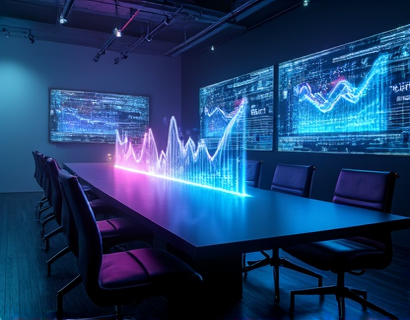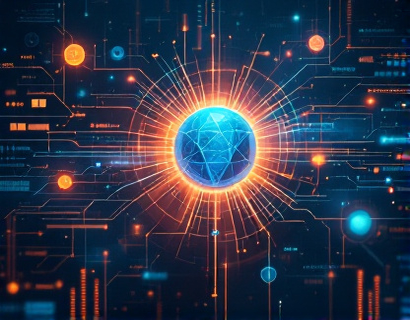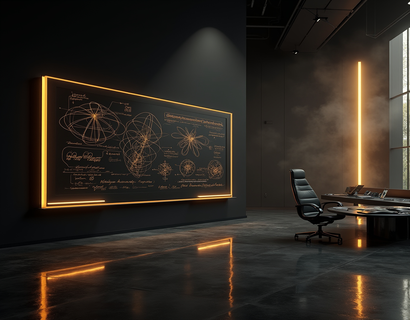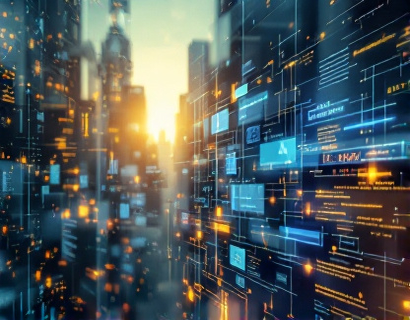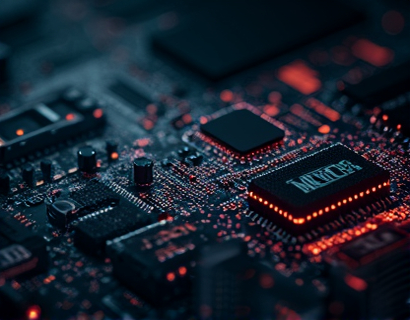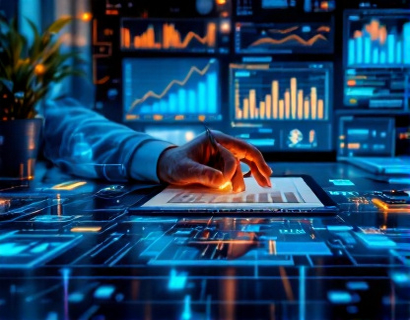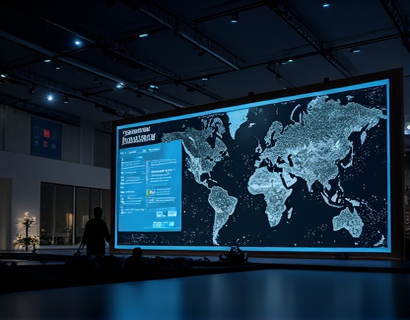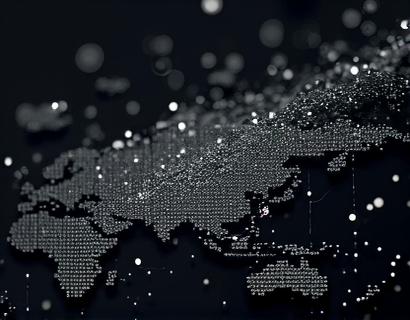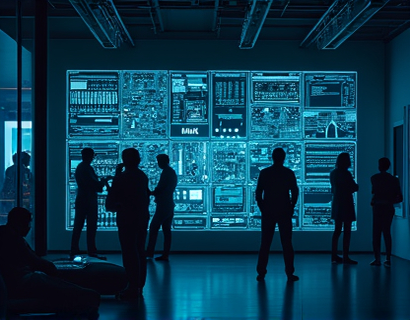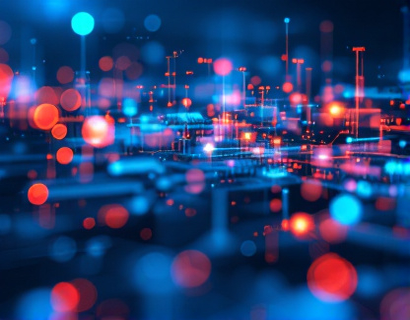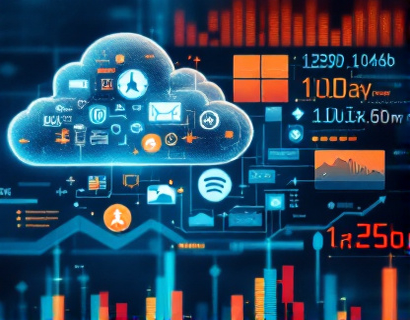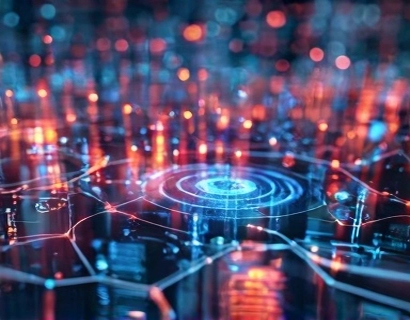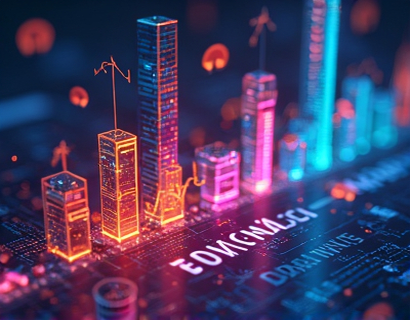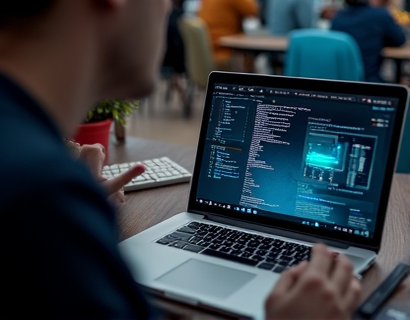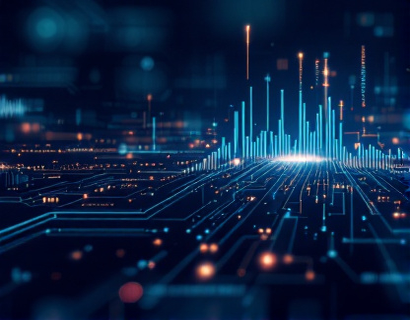Maximizing Productivity with AI and Crypto: A Deep Dive into Decentralized App Innovations
The integration of Artificial Intelligence (AI) and cryptocurrency is ushering in a new era of productivity tools and decentralized applications. This transformation is not just about enhancing efficiency but redefining how we interact with technology. For tech enthusiasts, AI aficionados, and professionals seeking to optimize their workflows, understanding the synergy between these technologies is crucial. This article delves into the innovative decentralized app ecosystems that leverage AI and cryptocurrency to streamline tasks and boost productivity.
The foundation of this revolution lies in the unique properties of blockchain technology, which underpins cryptocurrency. Blockchain's decentralized nature ensures transparency, security, and immutability, making it an ideal platform for building trustless and autonomous applications. When combined with AI, which excels in pattern recognition, predictive analytics, and automation, the potential for creating highly efficient and user-friendly tools becomes immense.
Decentralized Applications: The New Frontier
Decentralized applications, or dApps, operate on blockchain networks and are not controlled by any single entity. This decentralization eliminates the risk of censorship and central points of failure, enhancing reliability and user control. AI integrated into dApps can automate complex tasks, provide personalized user experiences, and optimize resource allocation.
One of the key advantages of dApps is their ability to function without intermediaries. This not only reduces costs but also speeds up processes. For instance, in project management, a decentralized task management dApp can use AI to predict project timelines, allocate resources based on historical data, and automate notifications, all without the need for a central authority.
AI-Driven Productivity Tools
AI-driven productivity tools are redefining how we handle daily tasks. Virtual assistants powered by AI can manage schedules, prioritize tasks, and even draft emails based on context and user preferences. These tools learn from user behavior over time, becoming more accurate and efficient in their predictions and recommendations.
In the context of decentralized applications, these AI tools can be accessed and utilized by anyone on the blockchain network. For example, an AI-powered document review dApp can analyze and provide feedback on legal documents, contracts, and other professional texts. Users can upload their documents, and the dApp uses AI algorithms to highlight issues, suggest edits, and even translate documents in real-time, all while ensuring data privacy through blockchain technology.
Enhanced Security and Privacy
Security and privacy are paramount in the digital age, and the combination of AI and blockchain addresses these concerns effectively. AI can detect and mitigate security threats in real-time, while blockchain ensures that data is stored securely and transparently. This dual approach provides a robust defense against cyber threats.
Decentralized identity management is another area where AI and blockchain converge to enhance security. Users can control their digital identities through blockchain, with AI assisting in verifying identities and preventing fraud. This not only protects user data but also simplifies the authentication process, making it more user-friendly.
Optimized Workflows and Automation
Automation is a cornerstone of productivity, and when AI is integrated into decentralized workflows, the results are transformative. Smart contracts, self-executing contracts with the terms directly written into code, can be enhanced with AI to handle more complex and dynamic scenarios. AI can analyze conditions, make decisions, and execute actions within smart contracts, reducing the need for manual intervention.
For example, in supply chain management, AI-powered dApps can monitor inventory levels, predict demand, and automatically trigger purchases or shipments through smart contracts. This level of automation not only speeds up processes but also minimizes human error and reduces costs.
Personalized User Experiences
One of the most exciting aspects of AI integrated into decentralized applications is the ability to provide personalized user experiences. AI algorithms can analyze user data, preferences, and behavior to tailor applications to individual needs. This personalization extends to content recommendation systems, customized dashboards, and even adaptive user interfaces.
In a decentralized environment, users maintain control over their data, and AI ensures that this data is used to enhance their experience without compromising privacy. For instance, a decentralized finance (DeFi) platform can use AI to offer personalized investment advice based on a user's risk profile and market data, all while keeping transactions transparent and secure on the blockchain.
Challenges and Considerations
While the potential of AI and blockchain in creating innovative dApps is vast, there are challenges to consider. Scalability remains a significant issue, as blockchain networks can struggle to handle high volumes of transactions. However, advancements in layer 2 solutions and more efficient consensus mechanisms are addressing these concerns.
Another challenge is the user adoption curve. Integrating complex AI and blockchain technologies requires a certain level of technical understanding. User-friendly interfaces and educational resources are essential to make these tools accessible to a broader audience.
Future Prospects
The future of AI and blockchain in productivity tools is bright, with numerous exciting developments on the horizon. As technology advances, we can expect more seamless integration of AI into decentralized applications, leading to even more sophisticated and user-friendly tools.
Interoperability between different blockchain platforms will also enhance the ecosystem, allowing for more comprehensive and versatile applications. The convergence of AI, blockchain, and other emerging technologies like the Internet of Things (IoT) will create a more connected and intelligent world, where productivity is maximized and user experiences are unparalleled.
In conclusion, the fusion of AI and cryptocurrency is not just a technological trend but a fundamental shift in how we approach productivity and efficiency. Decentralized applications powered by these technologies are set to revolutionize various industries, offering unprecedented levels of security, automation, and personalization. For those ready to embrace the future, the possibilities are endless.




